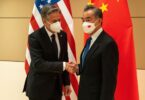Advisor to the PM on aviation said that PIA is anchoring huge losses by each passing day and the management appears to have no clue how to save the sinking titanic. He also said that the country flagship losses have surged to dollars four billions because neither the government nor the airlines management are ready to own it. PIA used to be the pride of the nation during the 1959 to 1970. It was a highly profitable entity under the charismatic, sagacious and honest leadership of Air Marshall Nur Khan. The airline operated successfully on both domestic and international routes. It competed with British Airways, Air France, Lufthansa and KLM on different routes abroad. The efficient management of PIA also lent a helping hand to Qatar and UAE in the establishment of world class airline service.
The decline of PIA started in the decade of 1970s because of nepotism and political appointments. The same trend was followed by the elected governments in late 1980s to date. The present government appointed Mr. Bernd Hildenbrand as a CEO of PIA who sucked out whatever blood was left in the national airline like a big leech. Now the government admits that his appointment was a mistake. During the second tenure of the PML (N) government corrective measures were not taken to clear the mess created by the preceding government of PPP. Licenses were awarded for the establishment of private airlines like Airblue, Shaheen and Bhoja Airline. Hence, the competition on domestic and international routes with these airlines further deteriorated the condition of PIA, which now the advisor to the PM call a sinking titanic. For which the present and previous governments are equal accountable.
PIA needed the induction of new aircrafts and restructuring of the management and staff, which was not set in motion. The constant neglect of these administrative and technical reforms compounded the losses of PIA and now the airline is reeling under the heavy burden of 150 billion bank loans for which NBP has given a sovereign guarantee. If the country’s flagship is privatized, it will render thousands of employees jobless and deprive its retirees from monthly pensions. Like the circular debt of power sectors, the burden of PIA loans will also be shifted to the people who have been reduced to their bones due to heavy indirect regressive taxes. This burden will prove to be a last straw on camel’s back.
Covert privatization of higher education
After the devolution of higher education to provinces, it has become unaffordable for the youth belonging to modest and poor financial backgrounds. Despite the transfer of more financial resources to KP government under 7th NFC award the provincial government is eager to implement its privatization plan for higher education. The universities are now charging a very high tuition fee from the students because the provincial government does not provide them education grants.
The ill conceived plan is being extended to the post graduate and degree colleges, which has vitiated the atmosphere of the government colleges. The teachers have gone on strike against the so called financial autonomy and constitution of board of governors, the management of which will be run by the political workers giving no say to the college principals. The students have protested against the teachers regarding this matter because they have acknowledged that these teacher strikes are wasting student’s precious time and money.
Human resource development is the key to progress and prosperity of a nation. In Pakistan allocation of resource for education sector is dismal as 2.9 percent of GDP is spent on education. Our country for allocation of fund to education sector is far behind in comparison to India, Bangladesh and Sri Lanka. Even a war ravaged country like Afghanistan spends 3.5 percent of its GDP on education. The worst deal given to education resulted in our failure to achieve the targets of Millennium Development Goals (MDG) set by the UN. As the contributions of our past and current political leaderships to MDG seems to be none. Therefore, the former PM Nawaz Sharif skipped the meeting of Sustainable Development Goals (SDG) despite his presence in New York for UN general assembly session last year. One crucial question everyone should ask the government that how the material resource deficient countries of South Asia achieved a spectacular economic growth and prosperity by diverting more and more funds to education. In the jargon, the mercantile class led by Nawaz Sharif used to blame the feudal class for the neglect of education sector, but this mercantile class gave a death blow to education and human resource development. Hence, a brain-drain continues at the expanse of the country and its people.
Keeping in view the importance of Human Resource Development, clumsy experimentations in the education sector should not be exercised by the federal and provincial governments. More resources should be provided to the universities and government colleges with a proper check on its utilization to substantially bring down the tuition fee and ensure the welfare of the students. Now the lecturers and the assistant professors in public sector universities are hired on paltry amount of salary of 35000 and 50000, respectively. This ungrateful attitude towards the pool of talent accentuates the flight of academicians to the developed countries where, there services are appreciated. On the other hand they do not get the reward of their services and they are given meager pay for longer working hours and unsatisfactory working environment.






